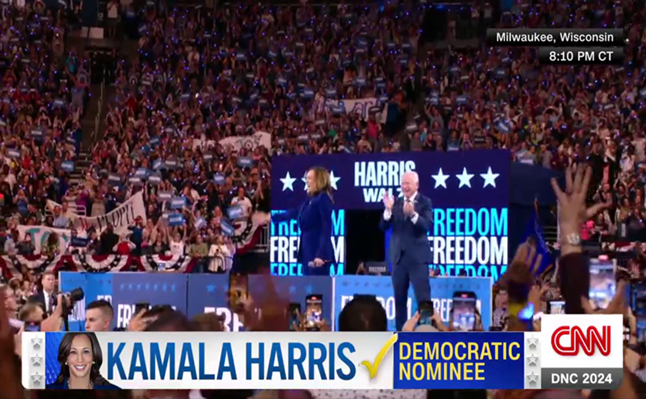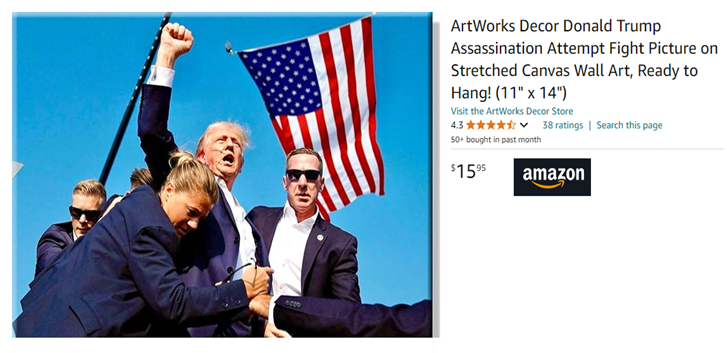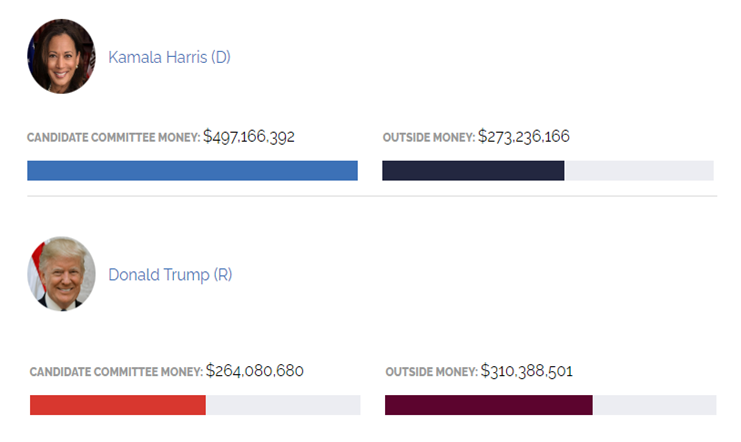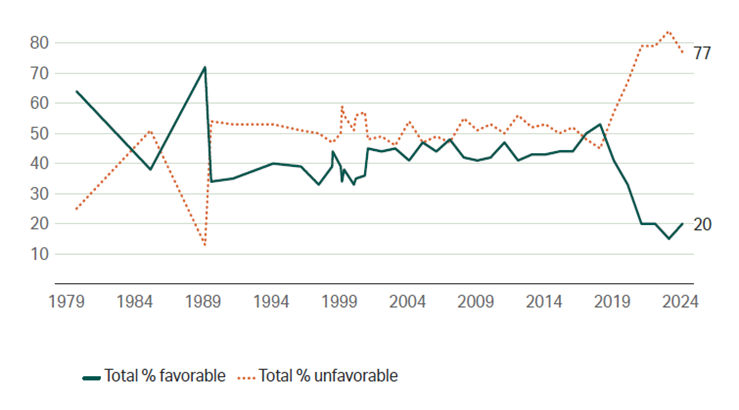For months, the U.S. presidential race has been hyped by national and international media with its incessant hunger for the latest sound-bites, spiced with expert opinions.
Nonetheless, views don’t make the world go around; money does, especially big money. Polls are shaped by media. Media is bought by campaigns. Candidates’ views are tailored to and by campaign finance, which is dominated by the powerful interests that make and break most Democratic and Republican campaigns.
Here's how the U.S presidential race (really) works.
Trump Protectionism and Economic Coercion
When former President Trump began his first campaign eight years ago, he pledged to end America’s foreign interventionism and focus on the defense of U.S. borders. The big money disagreed. So, Trump coupled his America First protectionism with muscular interventionism.
The real-estate tycoon has pledged to impose a tariff of 60% or more on Chinese goods, building on the reversal of America’s historical free-trade policies that he implemented in his first term. The stance would likely build on the ideas of Robert Lighthizer, his ex-U.S. trade representative, who would raise tariffs on China, cut off investment between the two countries, and block Chinese social-media companies until China’s trade surplus would presumably disappear.
If the stated objective is to reduce the trade deficit with China, the actual effect has been precisely the reverse. Trump’s economic policies and trade protectionism would accelerate the U.S. deficit causing public debt to soar. In 2025, Trump would first trash Biden-Harris geopolitics and then build on it. He would continue to push back on China and rally partners to raise pressure in the South China Sea.
These policies will destabilize East and Southeast Asia’s economic development. But that’s not Trump’s concern. America First is.
Harris: From America First to American Fist
After stating repeatedly that she “is not Biden,” Harris would largely continue Biden’s trade policy. Effectively, she would retain most of Trump’s tariffs on China while raising some (e.g., electric vehicles). Managed trade would prevail in steel and commercial aircraft with key allies.
Like Biden, Harris would continue Trump’s blocking of new appointments to the WTO’s dispute-settlement body, thus undermining its enforcement role.
Supporting across-the-board interventionism, Harris would build on Biden’s Indo-Pacific Economic Framework stressing cooperation on tax, digital trade and supply chains, without reducing tariffs. Like Biden, she will seek to counter China by strengthening partnerships in the Pacific.
In particular, Harris is likely to foster the U.S.-Philippines collaboration on the South China Sea. Her administration wants to tie Beijing and Manila into a longstanding conflict to undermine Taiwan’s eventual integration with the Chinese mainland; if necessary, at the cost of the Philippines economic and sovereign future. In the big picture, Manila is collateral damage.
Under Harris, the America First stance abroad will be replaced by American Fist; preferably with the support of like-minded military-industrial complexes in Europe and Japan.
From Big Media…
On September 12, Harris scored 47.1% against Trump’s 44.3%. But the race is too close to call. Until the Republican and Democratic conventions in July, Trump had a +3% lead over Biden in a tight race complicated by the independent campaign of Robert F. Kennedy, which garnered 9% of the polls.
After the national conventions - following a great amount of behind-the-façade wheeling and dealing and the financiers’ effective blackmailing - Biden was replaced by his Vice-President Kamala Harris in late July. Meanwhile Kennedy withdrew from the race and largely joined the Trump camp (Figure 1).
The effects were immediate. At the surface, Harris gained an almost 3% lead over Trump; effectively 6 percentage points. Since Harris represented essentially Biden’s old policies, how was this possible?
First of all, Kennedy’s strategic move proved less effective than expected because his polls had dwindled to close to 5%. In part, Harris’s surge was due to a rejuvenation of support, as her more youthful presence gave the Democratic constituencies a collective relief. The aging Biden is too old for another term in the White House.
But finally, it was shrewd political marketing and media promotion. As Harris took over, Democratic marketers began to hammer the new message, “There’s new energy! There’s new excitement! The campaign is on fire!”
Figure 1. Too Close to Call

Source: fivethirtyeight
… to Big Money
Of course, nothing had changed, except for perceptions. Through Biden’s first term, Harris had suffered PR nightmares causing her ratings to significantly erode. However, as mainstream media soon embraced the Democrats’ political marketing messages, the tight race boosted ratings allowing these mainstream outlets to gain viewers during national conventions, even over Trump’s attempted-assassination raised-fist iconography (Figure 2).
Figure 2 The Harris “New Energy!” Campaign

Trump iconography for sale

Source: CNN/YouTube; Amazon sales of Trump iconography
By late August, the media race was normalizing. With the 2024 Democratic National Convention in the rearview, it was a return to the status quo among the cable news networks. Fox News recaptured the top spot in total viewers and the adults 25-54 demo. CNN claimed second place, moving ahead of MSNBC in both primetime and total viewers.
But such ratings require money, lots of money. And in the money race, where candidate committee money is coupled with outside money, Harris’s ($775 million) lead is a whopping 35 percentage points over Trump ($575 million). The big funders of the Harris campaign represent big technology (Alphabet/Google, Microsoft. Amazon, Apple, Meta/Facebook). Whereas the big money behind Trump reflects billionaires, Israeli-American, aerospace and energy money (Figure 3).
Figure 3 Campaign Finance

Blue and red bars represent candidate committee money; the black bar represents outside money.(Source: Open Secrets)
Geopolitics by another name
As projected by some in the late 2010s, the Trump administration’s embrace of trade protectionism and coercive geopolitics undermined the global recovery. As the Biden administration chose not to reset Trump protectionism, it contributed dramatically to global geoeconomic fragmentation disrupting global growth prospects.
These are the policies that the Harris administration will build upon and the Trump administration would accelerate. If the effect has been disastrous in the past, it will be worse in the coming years.
Starting in 2018, Trump’s tariff war targeted mainly Chinese intermediate inputs and capital equipment; that is the mainland's “world factory.” In the past decade, the Chinese mainland has become a global science and innovation hub, however. As a result, in 2025, the Harris-Trump administrations are likely to target largely the final consumer goods struggling to protect domestic industries while hoping to avoid imposing costs on their supply chains.
In brief, the U.S. tariff wars will no longer be about protectionism against assembly plants and cheap products. They will try to contain and crush advanced industries and cutting-edge technologies in China. Since this makes little economic sense, China (and other large emerging economies in the Global South) will be increasingly portrayed as “different” and the “other” - as the geopolitical “enemy” par excellence.
Manufacturing “enemies”
For almost half a century, Gallup has polled American views on China. Following Beijing’s 2001 membership in the WTO, these views were initially divided but steadily improved. “Americans have been feeling more positively toward China in recent years," Gallup stated in 2017, "and now 50% say they have a favorable opinion of that country.”
With the misguided portrayal of China as the enemy, the balance has drastically shifted. Today, 77% of Americans view China unfavorably and only 20% favorably, thanks to the revolving doors between the Pentagon, the State Department and the military-industrial complex (Figure 4).
Figure 4 Manufacturing an “Enemy”: US Perceptions of China, 1979-2024

Source: Gallup
This unwarranted, manufactured outcome didn’t have to happen. With continued improvement of U.S.-Chinese ties, global recovery and the rise of the Global South would have become the new norm. That, however, is not seen in the West’s interest.
The ominous times looming ahead are reflected by the recent passage of two bills (H.R. 1398, H.R. 9456) that seek to reinstate the now-defunct China Initiative and add more restrictions to the current Alien Land Laws. Reimplementing the notorious program is sending shockwaves of fear across the Asian-American community. As critics warn, “both of these bills legitimize harmful and xenophobic narratives about immigrants, creating conditions that fuel anti-Asian violence.”
The political violence that now accompanies the U.S. 2024 presidential race will be followed by a wave of new domestic and international turmoil starting in spring 2025.
